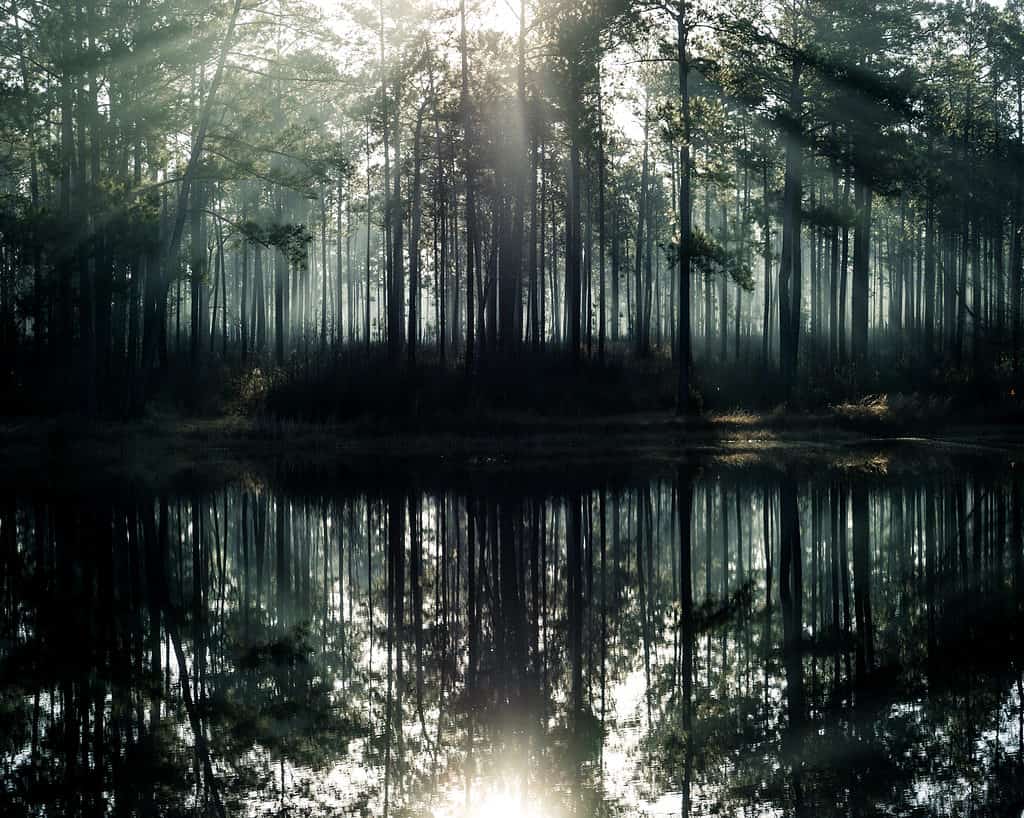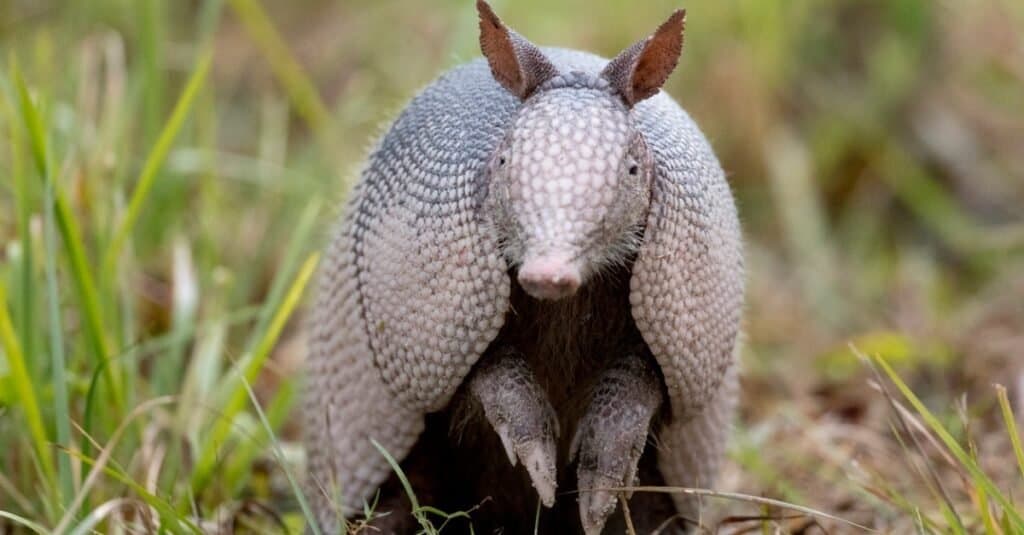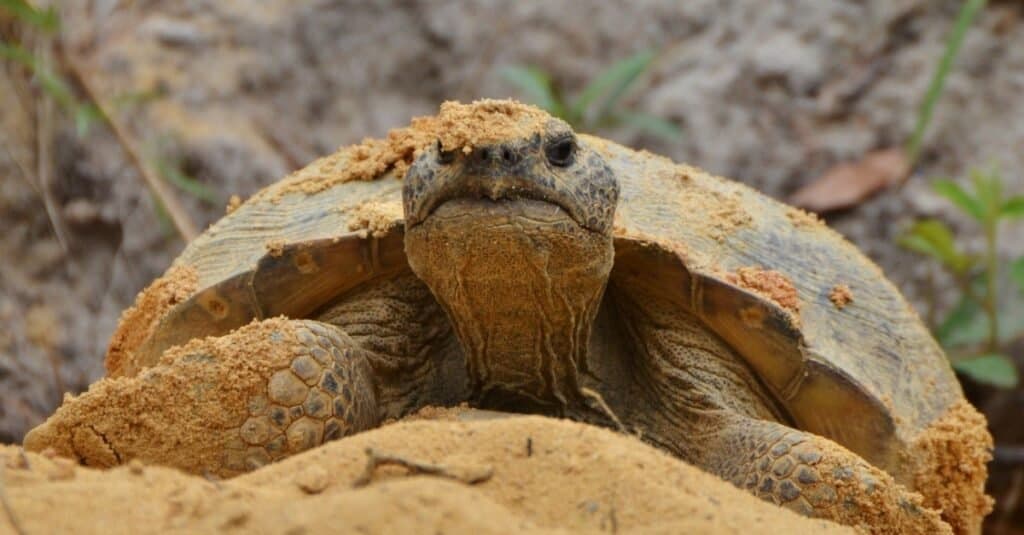When it comes to exploring the most extensive forests in the United States, Mississippi is undoubtedly a prime destination. Nestled within this great state lies an oasis of biodiversity that has existed for centuries: The De Soto National Forest.
Spanning over 518,587 acres, De Soto National Forest offers an incredible opportunity to explore the greatest treasures of Mississippi. With a rich history and an abundance of wildlife, it’s no wonder this forest continues to be a popular destination.
Keep reading to learn more about De Soto National Forest, its history, and what makes it so unique!
The Largest Forest in Mississippi: De Soto National Forest

©Steven L.J. Reich/Shutterstock.com
The largest national forest in Mississippi spans 518,587 acres across five separate ranger districts. De Soto Nation Forest is located in the Gulf Coast region in portions of 10 counties. These include Harrison, Jackson, Stone, George, Jones, Greene, Pearl River, Perry, Forrest, and Wayne. The pine forests that make up the majority of De Soto are some of the most pristine and untouched in the state.
This forest is nationally renowned for its longleaf pine savannas, flatwoods, and forests. Collectively, these comprise more than 90 percent of this type of ecosystem in the United States.
De Soto National Forest is unique for its abundance of natural resources and access to outdoor recreation opportunities. There are also two designated national wilderness areas, the Black Creek and Leaf River Wilderness.
The forest provides ample hiking and biking trails that range from easy to challenging, as well as campgrounds and backcountry camping. Visitors can enjoy fishing in any of the lakes or streams, as well as canoeing.
Several hunting areas within De Soto National Forest provide excellent opportunities for sports people.
History of De Soto National Forest
De Soto National Forest was named after Hernata De Soto, a Spanish explorer that mapped the region in the 1500s. The forest has a long history, much of which is tied to the logging industry in Mississippi.
The logging boom that occurred here during the late 19th and early 20th centuries had a significant impact on the ecosystem. Thankfully, the forest was preserved and continues to thrive today. This forest is an important protected area because longleaf pine forests (which take up most of De Soto) were almost completely wiped out during the logging boom. Only 10% of the ecosystem remains.
The De Soto National Forest became formally managed in 1936 when it became part of the National Forestry Service.
Over time, more land was added to the forest, and its resources were better utilized for recreational opportunities. Today, thousands of visitors come from far and wide to enjoy the natural beauty of this incredible forest.

©Danita Delimont/Shutterstock.com
Hiking and Camping in De Soto National Forest
Heading out into the wilderness to explore De Soto National Forest is an experience like no other. With over 60 miles of trails, this forest offers endless adventure and exploration. Choose easy hikes with the family or challenge yourself with a backpacking trip.
The hiking trails offer a variety of terrain for several different experience levels. The Black Creek Trail is an easy 40-mile loop that follows the creek. Here you’ll find plenty of chances for birdwatching and some occasional wildlife sightings. Campsites are available along the trail, making it an excellent option for overnight trips.
The Tuxachanie Trail is the more strenuous of the two, featuring an 11.9-mile stretch of challenging terrain. This trail takes you past some beautiful waterfalls and breathtaking views.
Those willing to tackle the Tuxachanie Trail will see expansive views of the rolling hills and majestic mountain peaks.

©57 × 646 pixels, file size: 512 KB, MIME type: image/jpeg – License
Other Activities
Hunting
With over 40,000 acres of public land available, there are plenty of opportunities to sharpen your hunting skills. Popular game animals include white-tailed deer, wild turkeys, and squirrels.
Be sure to review the laws and regulations before heading out into the woods. Always hunt safely and responsibly.
Fishing
De Soto National Forest has countless opportunities to catch fish. Several lakes and streams within the forest provide plenty of chances to snag a big one. Whether you opt for fly fishing or simply dropping a line, the waters of De Soto can yield some exciting catches.
Photography
The diverse landscape is perfect for capturing stunning shots of Mississippi’s natural beauty. The lush greenery of the forest floor and the towering pines above lend themselves nicely to stunning photography.
Additionally, animal sightings are common here, making it a great place to practice your wildlife photography skills.
Canoeing
Finally, the De Soto National Forest is an excellent spot for those looking to be on the water. With plenty of canals and rivers winding through the forest, you can explore this unique ecosystem from a canoe.
Wildlife in De Soto National Forest
De Soto National Forest is home to an impressive array of wildlife and offers unique natural habitats. The park contains birds, mammals, amphibians, reptiles, and fish, making it an ideal destination for nature lovers.
Here are some creatures you can expect to encounter in De Soto National Forest:
Mammals

©iStock.com/6381380
De Soto National Forest is home to various mammals, including raccoons, armadillos, opossums, and grey foxes.
These animals are typically nocturnal, so it may be difficult to spot them during the day. However, you may occasionally be lucky enough to catch a glimpse of these animals or their tracks.
Birds

©Dennis W Donohue/Shutterstock.com
This forest is a paradise for birdwatchers, with various species of birds found both offshore and inland. Offshore, you can spot bald eagles fishing in the Manatee River, as well as brown pelicans throughout the year. American white pelicans and common loons also live here in winter months.
Additionally, various terns, gulls, and shorebirds can be observed, as they change with the seasons.
Those looking inland for wildlife may spot herons and egrets feasting on aquatic invertebrates in the mangrove forest. The endangered wood stork is a rare but majestic sight in the mangroves.
The park’s upland vegetation also provides a habitat for many birds, including gnatcatchers, warblers, and flycatchers.
Reptiles & Amphibians

©iStock.com/mjf795
The gopher tortoise is one of the park’s most iconic species, often inhabiting the pine flatwood areas of the forest’s interior. Additionally, brown anoles, a species native to Cuba, inhabit the park.
Like leopard frogs, southern toads are also quite common throughout De Soto National Forest. The park’s wetlands also provide habitat for the endangered Mississippi slimy salamander.
Fish

©RLS Photo/Shutterstock.com
Popular gamefish in the river include bluegill, largemouth bass, black crappie, and bream. The river also supports populations of snook and catfish, making it a great spot to cast your line.
De Soto National Forest is teeming with life, from majestic birds and endangered turtles to playful raccoons and elusive foxes.
Things to Know Before Exploring De Soto National Forest
Before you head out to explore the beautiful terrain, you must familiarize yourself with the rules and regulations. Here’s what you need to know:
Wildlife Safety
Remember you are in the wild; wildlife encounters are highly likely. When hiking, keep an eye out for wildlife such as deer, coyotes, bobcats, and even bears.
If you spot a wild animal, remain still and back away slowly if necessary. You cannot feed wildlife in the forest, and any such act can lead to hefty fines.
Be sure to follow all posted signs and warnings about any dangerous animals that may be present in the area. In addition, always carry bear spray and never approach any wildlife.
Campsite Rules
If you plan on camping in De Soto National Forest, it’s essential to follow the rules of the campsites. Campsites must be at least 200 feet away from any water sources. Campfires must be in designated areas and completely extinguished when you leave the camp.
Only burn wood you find on the ground, and never cut or break trees for fuel. When you’re finished with your campfire, put it out completely and never leave it unattended.
Regulations for Hunting and Fishing
Anyone who wishes to hunt or fish in De Soto National Forest must have a valid license. You can obtain one from the Mississippi Department of Wildlife, Fisheries, and Parks.
You must follow all hunting and fishing regulations the department sets. These include bag limits on certain species of animals and size limits for catches.
Pets
Pets are allowed in De Soto National Forest, but they must always remain on a leash and under control. It’s important to remember that pets have the potential to disturb sensitive habitats.
Be sure to pick up after your pet and dispose of any droppings properly. Additionally, avoid areas marked off-limits for reasons such as nesting birds or other wildlife.
Hiking Rules
When out on the trails, it’s important to practice Leave No Trace principles. Pack out all trash and use designated trails whenever possible.
It is also illegal to pick plants, disturb wildlife or their habitats, or collect rocks or artifacts found within the forest boundaries. Additionally, visitors are prohibited from driving or parking off designated roads and trails.
Off-Road Vehicle Regulations
The park prohibits off-road vehicles. They do not allow ATVs, UTVs, or OHVs. Visitors must remain on designated trails and roads whenever driving within the park’s boundaries.
Finally, check with the local ranger station to get the latest information on regulations, safety tips, and closures before planning your trip to De Soto National Forest.
By following these rules and regulations, you can help ensure that everyone has a safe and enjoyable experience.
Visiting the De Soto National Forest
De Soto National Forest is an incredible place to explore and experience the wonders of nature. With various activities, wildlife, and scenery, it’s no wonder this forest is one of Mississippi’s most popular tourist destinations.
From hiking and camping to bird watching and fishing, this is a lovely location for nature-lovers. With its diverse wildlife, lush vegetation, and abundant activities, De Soto National Forest offers an unforgettable experience.
The post Discover the Largest Forest in Mississippi (And What Lives Within It) appeared first on AZ Animals.
from Animal News, Facts, Rankings, and More! - AZ Animals https://ift.tt/bKzQWDl